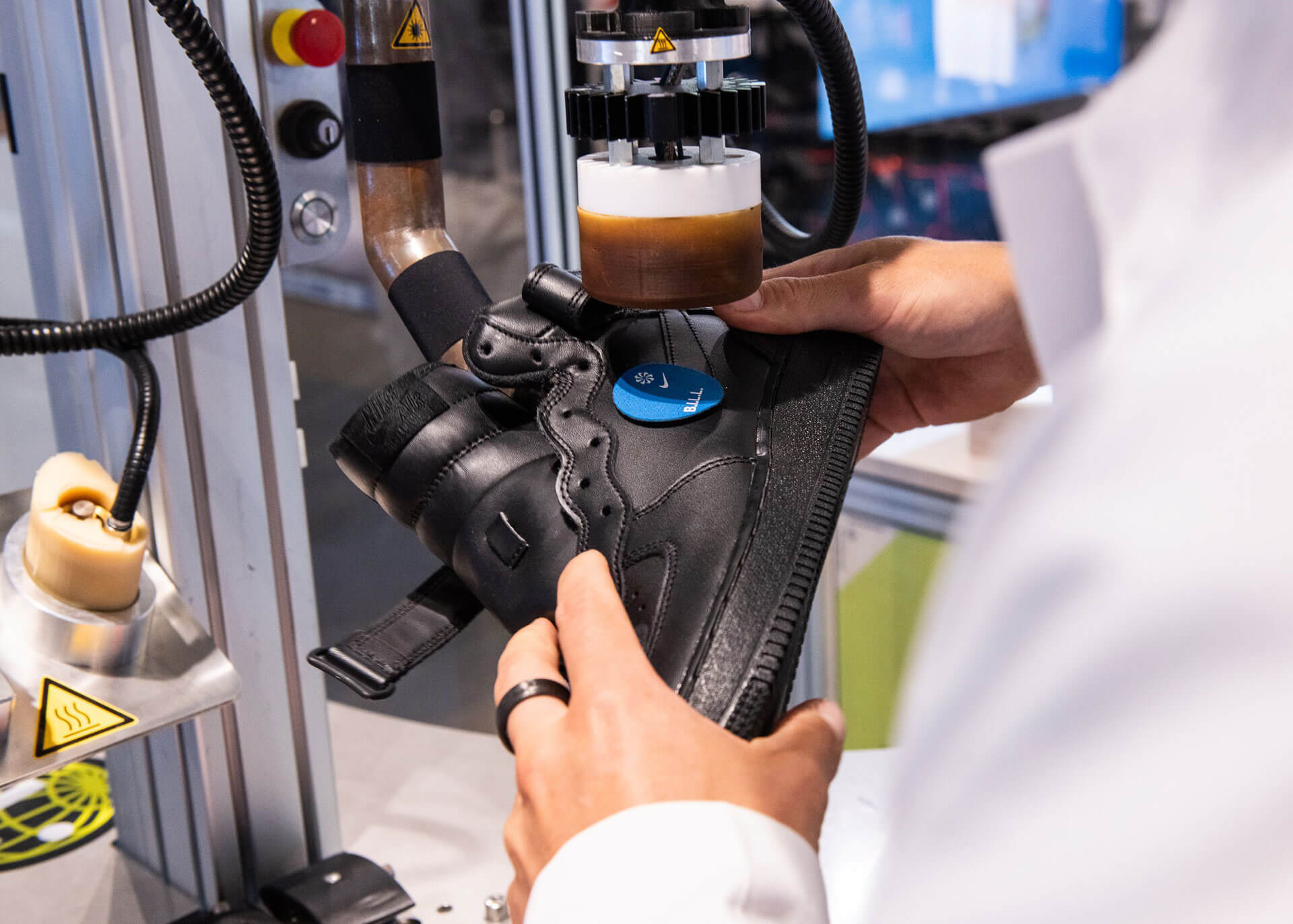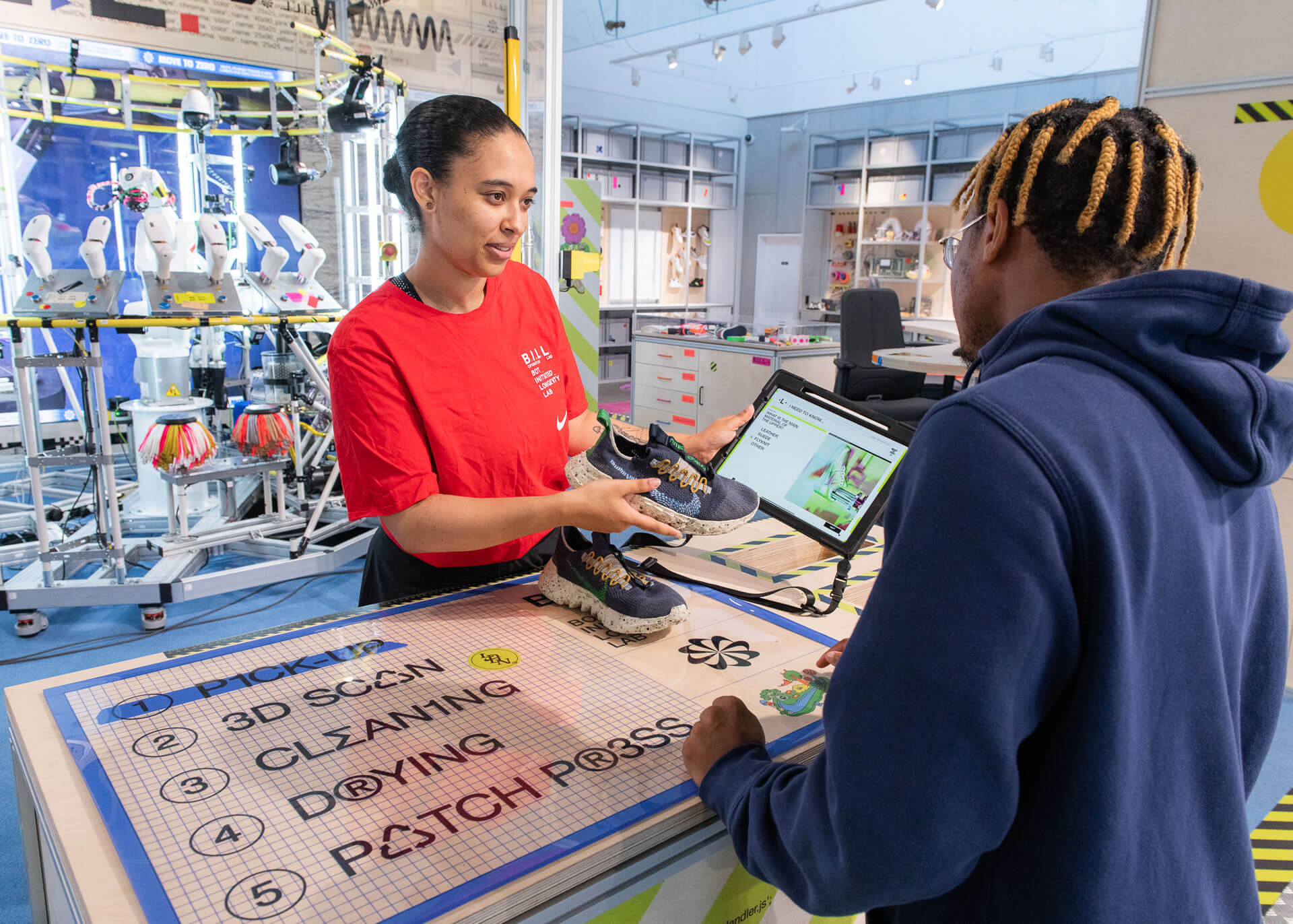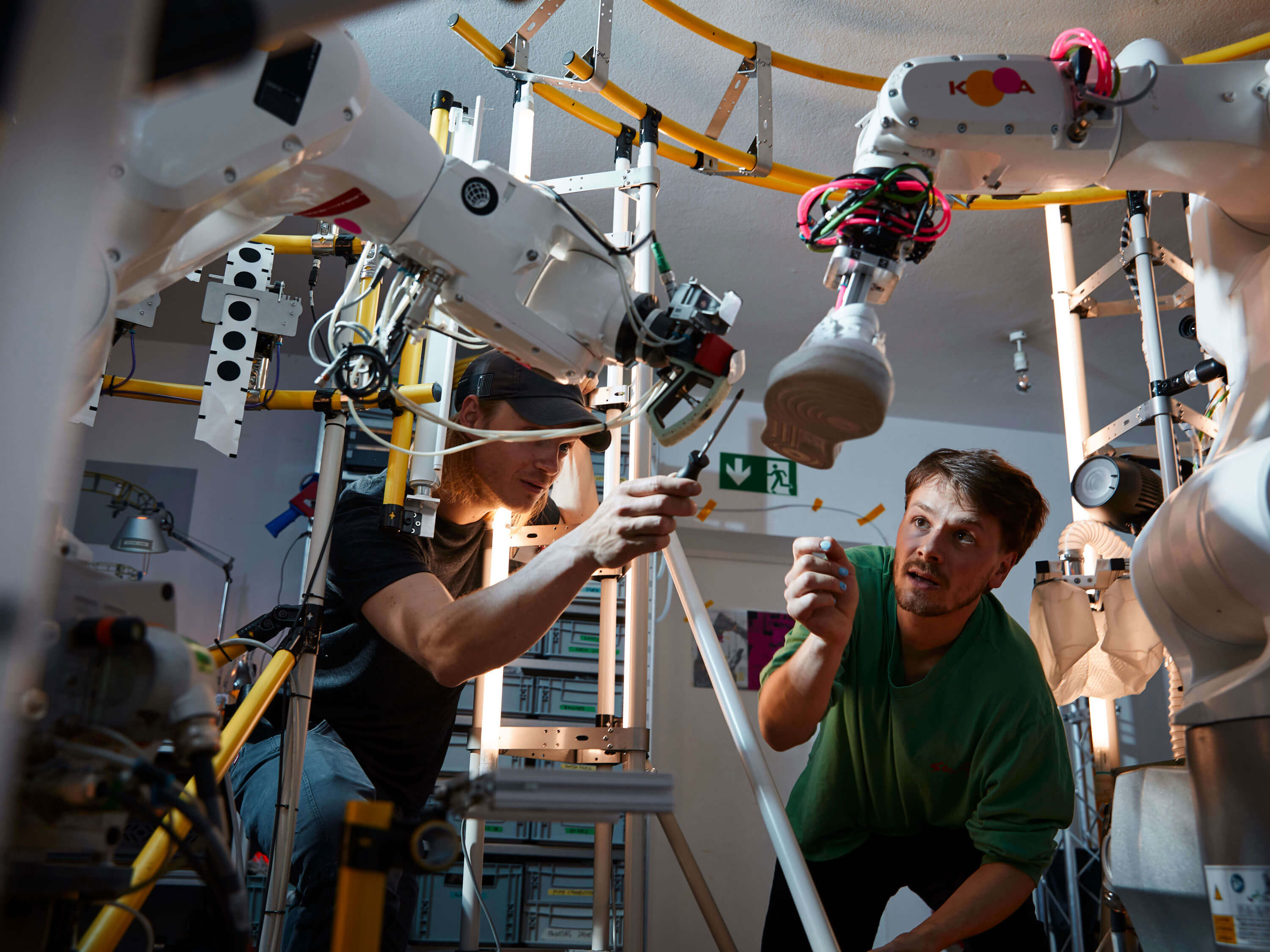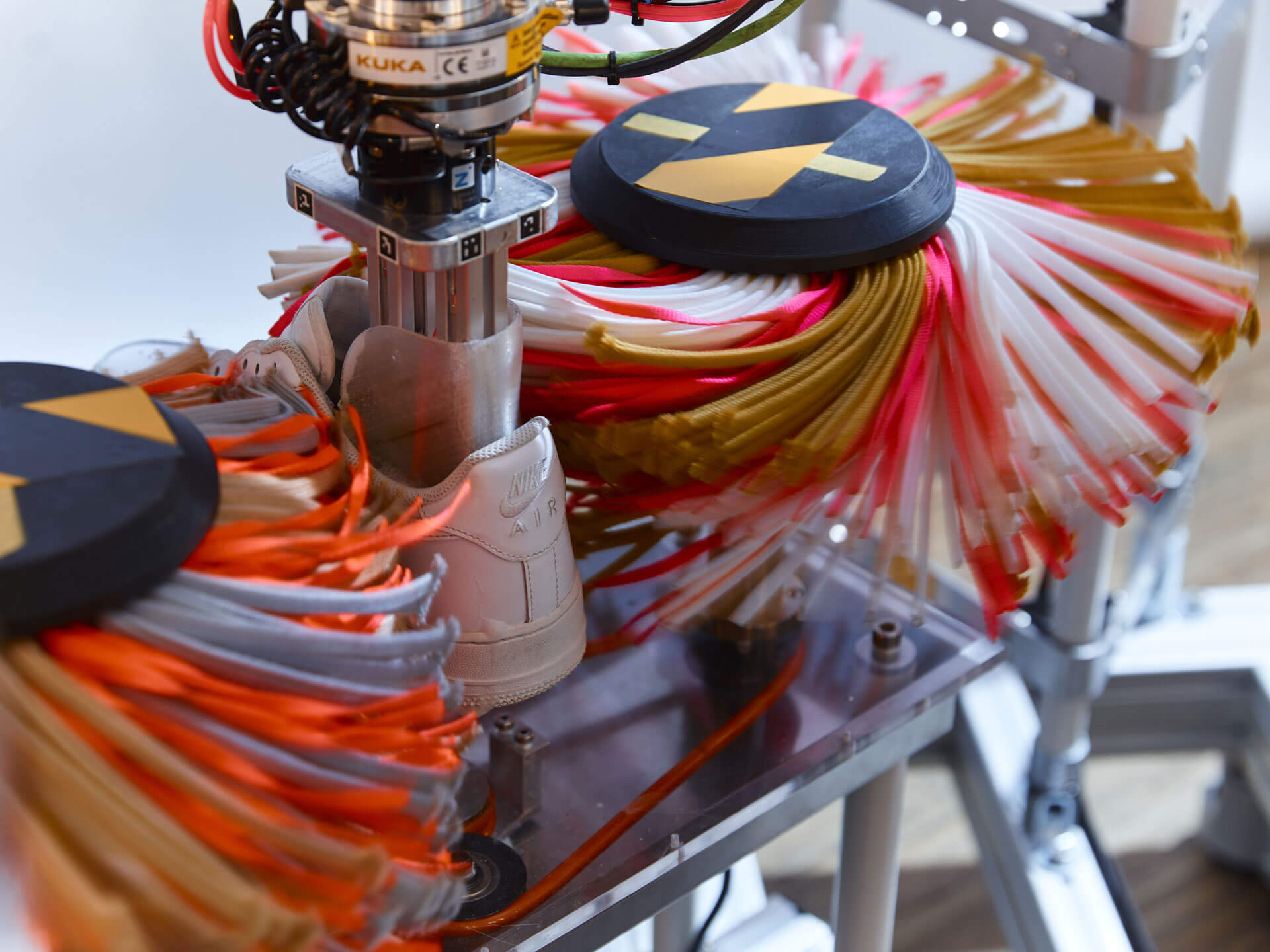




Nike x PCH Innovations
Using robotics to advance consumer circularity
"Can we build something to extend the lifecycle of sneakers?" they asked.
When Nike's NXT Innovation team approached us to build a machine to advance circularity, we knew we would be working with kindred spirits. PCH Innovations went on to work closely with Nike innovators, designers, engineers and vendors for two-and-a-half years to build and refine the Bot Initiated Longevity Lab, a.k.a. B.I.L.L., a robotic system with the mission to keep wearable sneakers out of landfill.

Understanding the journey.
Besides the engineering challenge, we knew that the project had a huge culture component – on one hand, celebrating the beloved Nike sneaker culture, on the other, forging a new mindset of consumer circularity within it.
To analyze the circular potential, we first had to understand the anatomy and the journey of a sneaker. Where it wears down, how it's maintained, and at which point its owner feels they've outworn it. Through this, our brief crystallized into what came to be known as B.I.L.L – a playful, fully automated robot with a very specific day job: Clean, repair and rejuvenate sneakers.
Hands-on exploration.
Once we knew what we were making, we could focus on how to make it. And, as with all of our robotics projects, this meant starting by hand.
Armed with traditional 'Schuhmacher' tools, hairdryers and various cleaning and mending supplies, we explored and iterated on the washing, drying and patching techniques that most uplifted the sneaker. Through carefully cataloguing our experiments, we could then review and isolate the processes suited to automation and crafted lo-fi prototypes to validate them.

Engineering circularity.
Because B.I.L.L. was initiated to make circularity accessible, we knew whatever we built would have to fit within the variable confines of a busy retail environment. We also wanted to approach B.I.L.L. as an exercise in circular engineering, which informed everything from size and materials to the end experience.
To work within these constraints, we derived a modular concept that combined several stations into one cohesive, robotic array, including a closed-loop water system, interchangeable components and a wiping brush made from surplus shoelaces.
Leveraging new technology.
For B.I.L.L. to identify points for patch placement, we used advanced photogrammetry that provides both an accurate 3D spatial representation of the sneakers and an interactive visual asset for consumers to keep as a digital memento.
All operations are based on sensor-based motion control using a force sensor to adapt intricate tasks like cleaning and patching to each unique shoe.
As well as designing the machine with an exposed 'exoskeleton', we also outfitted it with 5 tactically-placed, responsive cameras so that shoppers can follow each step of their sneakers' rejuvenation in real time.


Scaling repair.
While its foremost function is the extension of sneaker life, the B.I.L.L. project's broader purpose was to bring the tenets of circularity – repair, reuse, recycling – closer to communities, and in an accessible and engaging way. As such, a key part of the project was consideration of how to modularize the different functions for smaller semi-automated units that could be reproduced and installed more easily.
We started with the portable Patch Press unit, which allows users to adhere heat-activated patches to sneakers in under a minute. The next modules are already underway.


A robotic retail experience.
The modularity of the structure allowed the team to reassemble the robot in its debut location of Niketown, London in 48 hours. In order to secure the machine for a high-traffic retail setting while retaining visibility, it was installed within a transparent enclosure and fitted with laser fences that, if breached, automatically pause the repair cycle.
Once calibration was completed, B.I.L.L. was ready to receive its first customers and their sneakers.
“Both the range of sneaker variation and the handling of complex materials provided unique technical challenges, which is why much of the hardware and software is custom-produced.”
– Florian Born, Lead Robotics Engineer at PCH
Key innovations
We utilized, developed and combined several advanced technologies to bring B.I.L.L. to life.
Technically Speaking: Building B.I.L.L. interviews
PCH engineers Florian and Christian give us a detailed glimpse into the process behind developing B.I.L.L.
As B.I.L.L. continued its journey from Niketown London to Nike’s European Headquarters in Hilversum, we sat down with two of the PCH engineers behind it, Florian Born and Christian Kokott, to talk about their unique processes, challenges and the tech that made it happen. To read Pt. I click here and Pt. 2 here.
As seen on the web
Find out more
The B.I.L.L. project forms part of our broader work to fundamentally rethink manufacturing flows, using technology to localize value chains, enable rapid material innovation, product life extension, and recycling.
To find out more about our other circular manufacturing offerings get in touch with Dev Mishra.




















